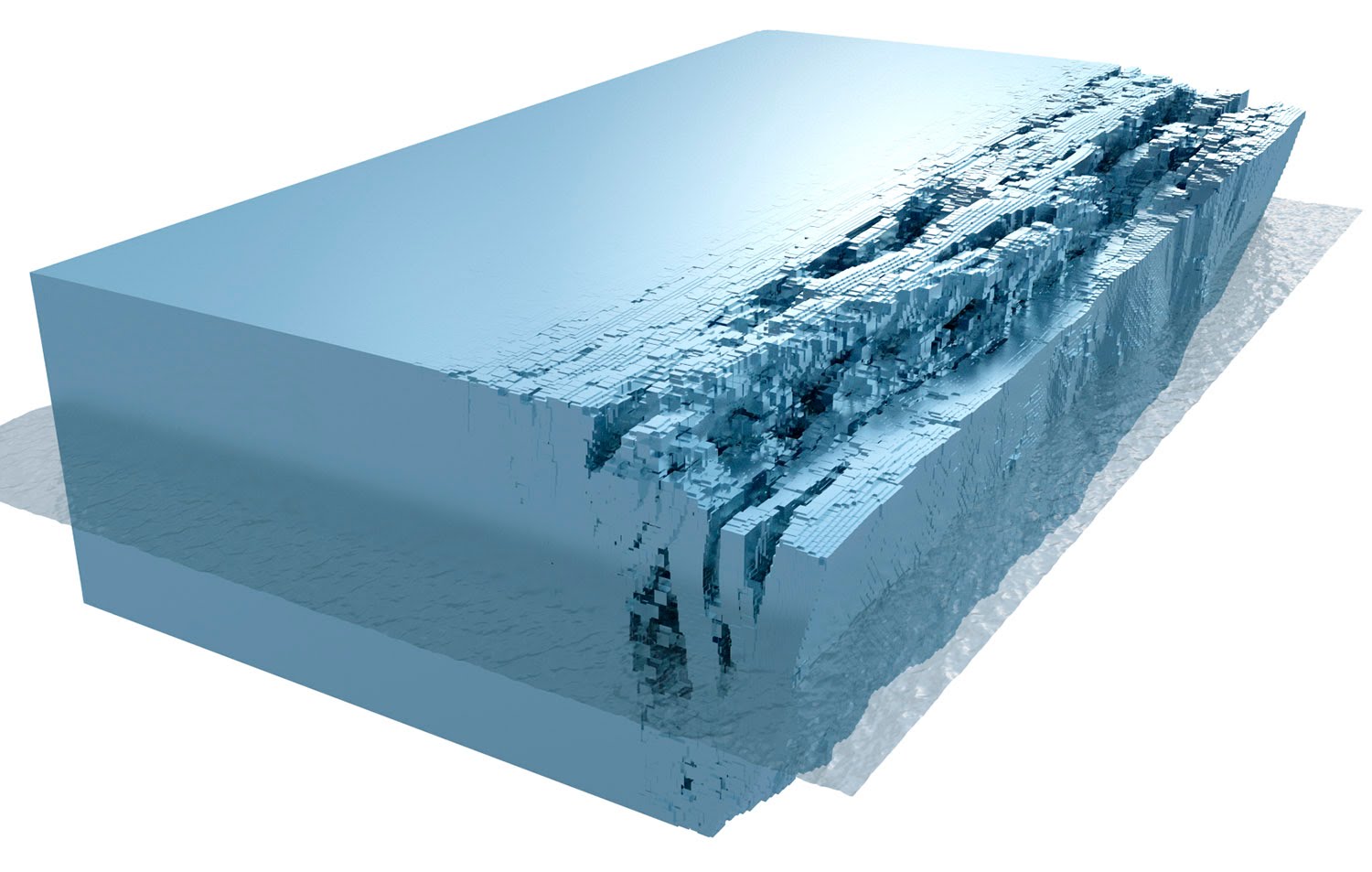Should we take the risk of Antarctic collapse seriously?
The IPCC AR5 sea level chapter considered instability of marine-based sectors of the ice sheets to be unlikely (Church et al., 2013). However, post-AR5 modelling indicates that Pine Island Glacier in Antarctica is already engaged in an unstable retreat (Favier et al., 2014), a situation that is projected to extend to neighboring Thwaites glacier (Favier et al., 2014), and even to East Antarctica (Sun et al., 2014). A recent observational study found an observed sustained increase in ice discharge from the Amundsen Sea Embayment, West Antarctica, from 1973 to 2013 (Mouginot et al. 2014). This prompted this reaction from Eric Steig:
Models from Mengel & Levermann (2014) also show that “We have probably overestimated the stability of East Antarctica so far”. This is early work and inconclusive, but it highlights a need for further study.
Crumbling ice figure courtesy Jan Åström, CSC, Finland
AR5 sea level projection unsuitable for adaptation planning?
For adaptation planning we really need the full unconditional uncertainty distribution. The above studies shows that the AR5 conditionality on no marine instability may be excluding a important part of the pdf. It appears to me to be much more than just a very remote possibility. This is also reflected in a recent expert elicitation from Bamber & Aspinall (2013). I question how useful the AR5 projections can be when used as-is for local adaptation planning.
Links:
- AR5 sea level rise uncertainty communication failure
- Comparison of sea level projections
- Optimistic & over-confident ice sheet projections in AR5
- A comparison of Glacier projections
- Background material on the marine ice sheet instability.
- Emanuel on Tail-risk vs Alarmism.
References:
- Church, J.A., P.U. Clark, A. Cazenave, J.M. Gregory, S. Jevrejeva, A. Levermann, M.A. Merrifield, G.A. Milne, R.S. Nerem, P.D. Nunn, A.J. Payne, W.T. Pfeffer, D. Stammer and A.S. Unnikrishnan, (2013a): Sea Level Change. In: Climate Change 2013: The Physical Science Basis. Contribution of Working Group I to the Fifth Assessment Report of the Intergovernmental Panel on Climate Change [Stocker, T.F., D. Qin, G.-K. Plattner, M. Tignor, S.K. Allen, J. Boschung, A. Nauels, Y. Xia, V. Bex and P.M. Midgley (eds.)]. Cambridge University Press, Cambridge, United Kingdom and New York, NY, USA [link]
- Favier, L., Durand, G., Cornford, S. L., Gudmundsson, G. H., Gagliardini, O., Gillet-Chaulet, F., T. Zwinger, A. J. Payne, and A.M. Le Brocq. (2014). Retreat of Pine Island Glacier controlled by marine ice-sheet instability, Nature Climate Change, 4, 117–121 doi:10.1038/nclimate2094
- Sun, S., Cornford, S. L., Liu, Y., & Moore, J. C. (2014). Dynamic response of Antarctic ice shelves to bedrock uncertainty. The Cryosphere Discuss., 8, 479-508, 2014, [link]
- Mouginot, J., Rignot, E., & Scheuchl, B. (2014). Sustained increase in ice discharge from the Amundsen Sea Embayment, West Antarctica, from 1973 to 2013. Geophysical Research Letters, 41(5), 1576-1584. [link]
- M. Mengel, A. Levermann. Ice plug prevents irreversible discharge from East Antarctica. Nature Climate Change, 2014; DOI: 10.1038/NCLIMATE2226
- Bamber, J. L., and W. P. Aspinall. (2013), An expert judgement assessment of future sea level rise from the ice sheets. Nature Climate Change. doi:10.1038/nclimate1778

 ](
](